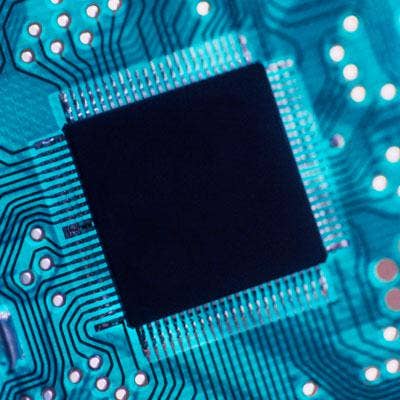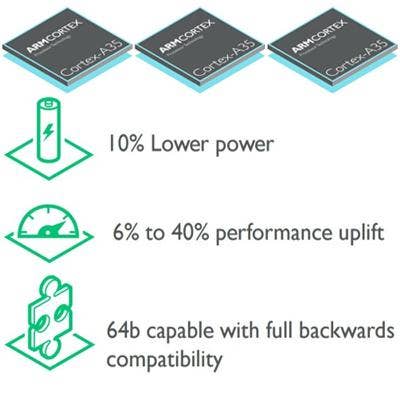The 10 Coolest Chips Of 2015

Chips Are Always Up In Digital World
Microprocessors are the lifeblood of the digital world. Each year, as Gordon Moore predicted, things move faster and get more interesting. This past year is no exception. IBM broke barriers, creating transistors just 7 nanometers wide. GPU technology pushed the limit with video cards that can deliver 4K video at 60fps. And Intel led the power charge with a beast-mode-class 72-core Knights Landing supercomputing chip.
For most of us that aren’t early adopters and independently wealthy, we’ll have to wait until 2016 to 2017 to reap the rewards of 2015’s chip technology breakthroughs. That’s because, as with all things new in IT, the coolest chips introduced in 2015 are still super expensive.
Here is a look at 2015’s coolest chips.
Fastest: Knights Landing
Hold on tight. In November, Intel said it packed 72 cores in its supercomputer Xeon Phi chip, code-named Knights Landing. Intel claims it is the company’s most powerful chip so far. You’ll have to wait until early 2016 to get your hands on the chip, however. Intel said it will only distribute a limited number in the first half of next year to researchers who need serious horsepower to crack complex scientific calculations.
The chips, designed for highly parallel computing, will be able to compute single-precision calculations at a rate of 8 teraflops. The chip is currently one of Intel’s biggest CPUs with more than 8 billion transistors and supports up to six DDR4 memory slots with capacities up to 64 GB per stick.

Power Efficient: Cortex-A35
Microprocessors for wearables are greedy. They want it all: power, smarts and, most of all, energy efficiency. Chip designer ARM is hoping to satisfy wearables with its Cortex-A35 low-power application-tier CPU architecture. Introduced in November, the Cortex-A35 has power targets as low as 90mW at 1GHz on a 28-nanometer manufacturing process.
The Cortex-A35, according to ARM, uses 10 percent less power than its predecessor, the A7, at the same time delivering a performance boost of between 6 percent and 40 percent, depending on use case.
Innovative: Silicon-Germanium Chip
In July, IBM said it had built an ultra-dense 7-nanometer chip that could some day lead to the ability to place 20 billion transistors on a chip the size of a fingernail. The processor, which uses transistors only about three times larger than a strand of DNA, is being developed in partnership with GlobalFoundries, Samsung, and SUNY Polytechnic Institute's Colleges of Nanoscale Science and Engineering.
The chip will be used to power a variety of products, according to IBM, including its Watson supercomputer, cloud data centers and mainframes. A 7-nanometer microprocessor bests dominant chip maker Intel’s current commercial 14-nanometer Broadwell processors, unveiled in June. IBM said it was able to accomplish the 7-nanometer milestone by using a silicon-germanium alloy instead of silicon to make molecular-size switches.
Mobile: Snapdragon 805
When it comes to smartphones, it’s a balancing act between performance and power conservation. In 2015 one chip that managed to master that balancing act was Qualcomm's 2.7GHz quad-core powerhouse Snapdragon 805 chipset. The 32-bit Snapdragon 805 can be found in some of this year’s highest-rated phones such as the Motorola Droid Turbo, Samsung Galaxy Note 4 and Galaxy Note Edge. The chip is credited for creating butter-smooth stylus performance in the Galaxy Note and fast and fun game action in the Droid Turbo.
But the Snapdragon 805 won’t have much time to rest on its laurels. Qualcomm’s successor, the 64-bit eight-core Snapdragon 810 processor, isn’t shipping in any smartphones yet but already is getting a lot of buzz.
Tablet: A9X SoC
The mammoth 12.9-inch iPad Pro made a huge splash in 2015 not just because the tablet was "ginormous" by Apple standards. The iPad Pro signaled Apple’s desire to broaden its iPad appeal to the enterprise suit-and-tie crowd. Much of the excitement around the all-business tablet is traced to the iPad Pro’s super-charged A9X SoC. The chip is the most powerful processor Apple has ever put inside an iPad.
Compared to its predecessor SoCs, the A9X has huge improvements, delivering on nearly every metric from graphics and horsepower – outperforming even some Intel Core M processors. Apple claims the A9X has 70 percent more CPU performance and 90 percent more graphics performance compared to the A8.
According to teardown experts at Chipworks, the A9X SoC is dual-core with a clock speed of 2.26GHz (Twister), with a 128-bit memory controller and capable of internal bandwidth at 51.2 GBps. The chip was designed by Apple and is manufactured by both Samsung and the Taiwan Semiconductor Manufacturing Company.
Desktop: Core i7-6700K
If performance is what you are after on the desktop PC front, look no further than Intel’s Core i7-6700K processor. This is part of Intel’s sixth-generation Core CPU rollout earlier this year built on Intel's 14-nanometer Skylake architecture. On the plus side, this chip is ready to overclock and comes ready to accommodate extra PCI Express lanes for lightning-fast storage. The only knock on this chip is it’s not going to be an upgrade option given that you’ll need a new motherboard for any system more than a year old.
Server: Xeon+FPGA
When it comes to servers, brains wins over brawn nearly every time. That’s the idea behind Intel’s release of its Xeon processors with field-programmable gateway arrays (FPGAs), unveiled in 2015 and available early in 2016. The Xeon+FPGA CPUs are programmable microprocessors that can be configured for customers after the manufacturing process for specialty application-specific uses. Companies like Facebook, Amazon Web Services, Google, Alibaba and Microsoft love these types of server chips to run their cloud business. The chips can be designed to perform a narrow set of tasks extremely efficiently, saving time and money on power. These Xeon+FPGA processors, Intel said, help companies deliver 20X performance boosts and will fit in the standard E5 LGA2011 socket. That means companies can integrate them easily into their existing data center.
Memory: Trident Z
Average PCs use average RAM. But those who ponied up for a PC with Intel’s latest Z170 Skylake platform can take advantage of faster memory kits on an entirely new family of motherboards. These new Z170 motherboards support DDR4 memory kits with speeds that range from 2,133MHz to 4,000MHz. These memory modules target hardcore PC gamers that crave as close to zero latency between a CPU’s instructions and a PC’s performance. While there are mitigating factors, as a general rule of thumb, the higher the RAM’s density and frequency, the better the performance the memory module can deliver.
RAM manufacturer G.Skill introduced Trident Z memory kits this summer with frequencies that push the envelope to 4,266MHz. If you’re not a dedicated gamer, these memory modules are definitely overkill. But if you are willing to dig deep, to the tune of $490 for a G.SKill TridentZ Series 8-GB DDR4 4,266MHz memory kit, you’ll have the fastest-rendering PowerPoint presentations in the office – hands down.
SSD: SanDisk Extreme Pro
For the past several years the market for SSDs has been on fire with startups jumping into the space. More recently, in 2015, mature legacy storage vendors jumped into the fray offering all-flash storage arrays featuring solutions that could compete with new and legacy storage solutions when it comes to performance and price.
SanDisk is at the tip of the spear when comes to an aggressive SSD offensive with a new ’ultra-high’ performance Extreme Pro SSD drives with capacities that go as high as 1 TB. The SanDisk Extreme Pro has read speeds of up to 500 MBps and write speeds of 515 MBps all with a SATA Revision 3:0 (6 Gbps). One of the best things about SanDisk’s offering isn’t necessarily performance, it’s an unprecedented 10-year warranty. Drives start at around $110 for 240-GB capacity and up to $380 for the 980-GB drive.
GPU: Nvidia GM200
GPUs can make or break PC performance when it comes to high-end CAD and especially gaming. MSI’s GeForce GTX 980 Ti is one of 2015's most impressive video card offerings, delivering 6 GB of DDR5 memory and superior performance. The GTX 980 Ti is based on the very powerful Nvidia GM200 GPU, which is 2015's most drool-worthy, super-premium GPU of the year -- popping up in a new generation of video card offerings that take CAD, gaming and visualization from 3-D to virtual reality. Recently released virtual reality titles such as ’Thief in the Shadows’ said they worked closely with Nvidia to optimize the VR.